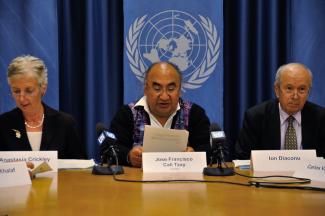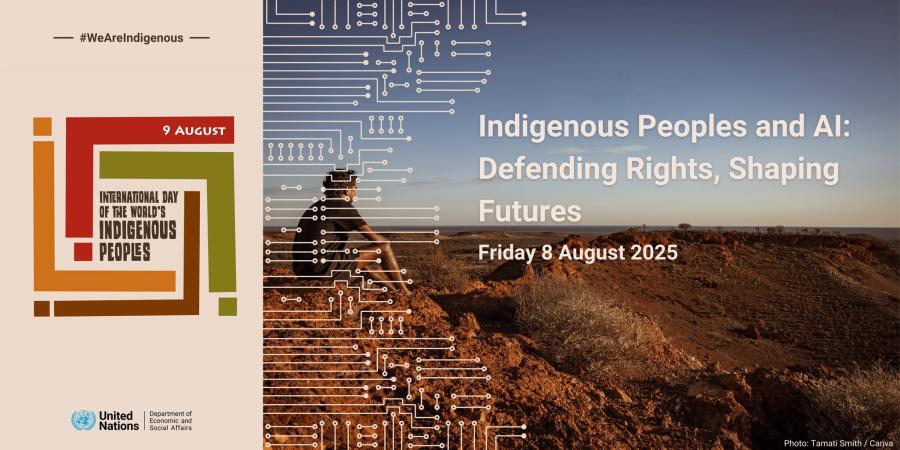
The International Convention on the Elimination of Racial Discrimination (ICERD) is the first international human rights treaty with a binding legal commitment condemning racist policies and practices, adopted by UN General Assembly Resolution 2016 A on December 21, 1965. The Convention is implemented by the UN Committee on the Elimination of Racial Discrimination (CERD), the first UN human rights treaty body, established in 1970. Composed of 18 experts, Committee members conduct regular reviews of national policies and practices. A review by CERD is an opportunity to advance racial justice and abolish discrimination. ICERD provides an international standard for States to respect rights of all peoples regarding racial equality, and CERD offers a mechanism of accountability for Indigenous Peoples to challenge legacies of discrimination. To date, 175 States have ratified ICERD.
Composition of Country Reports
ICERD consists of 25 articles defining racial discrimination and determining responsibilities of States. The first seven articles outline rights, with most enshrined in Article 5. The other six articles focus on adoption of effective, protective measures to end racial discrimination, including affirmative action. Articles 8–25 focus on the mandate of the CERD. The 18 Committee experts, in serving 4-year terms, review reports prepared by States along with contributions of civil society to consider the progress in eliminating racial discrimination. When a country ratifies ICERD, it must submit an initial report within one year outlining its objectives to end discrimination. Periodic reports are subsequently due every two years. However, in practice, States have been reporting every four years with combination periodic reports. The common core document provides detailed background information of implementation of human rights and general framework to protect and promote fundamental freedoms. CERD created the procedure, List of Themes, to make the reporting process more targeted.
Shadow Reports and Advocacy
CERD meets twice a year for four-week sessions at the Palais Wilson in Geneva, Switzerland, in February and August. Six to ten states are reviewed by expert members at each session. The list of themes starts the review of each country, guiding dialogue between governments and CERD members. Shadow reports, drafted with information from directly impacted people, contribute to the country review and are important to ensure the voices of people present during the review.
It is important to submit a shadow report at least two weeks prior to the session electronically and by mail. For every state, a country rapporteur leads the Committee review. The remaining 17 members are also free to participate actively. Reviewing legal literature of each member or watching earlier CERD webcasts will enable activists to understand how the actual review takes place, to set up a Geneva strategy, and to establish which thematic issues are important to each CERD expert. Indigenous Peoples and civil society can then begin direct interaction with experts prior to the review.
One can offer a brief in person presentation to CERD members on the first day of each week of the session. A three hour period is divided among all NGOs that submit shadow reports and are in Geneva to present their facts orally. Coordination of a civil society briefing on Monday morning guarantees specific issues highlighted and paves the path for CERD members to follow up prior to the actual review. Coordination ensures all significant articles receive attention at the review and provides support for necessary questions to be raised and recommendations given to the government. Coordinating with the Office of the High Commissioner secretariat for at least one lunchtime briefing on the State being reviewed immediately prior to the actual review commencing in the afternoon in the adjacent room in Palais Wilson is also beneficial.
Concluding Recommendations
There are two, three-hour sessions of interactive dialogue with the State beginning at 3:00 p.m. and continuing the next day at 10:00 a.m., allowing for the State to provide responses to CERD members’ questions raised in the first half of the review. The chair of CERD opens the session. States begin the interactive dialogue with a short review on the situation of combating racial discrimination and introduction of its delegation of national decision-makers from the administration, including UN Mission diplomats based in Geneva. Next, the country rapporteur is recognized through a detailed initial assessment and analysis of the country report and launches the question component of the review. Then individual committee members ask a series of questions to the State delegation.
The country rapporteur leads the interactive dialogue covering the list of themes. Each member may ask questions and make comments regarding rights enshrined in the articles of ICERD. The State usually responds the following morning after an all-night session in consultation with its capital. Then there are followup questions and comments by CERD members to fully understand the situation regarding racial justice in the State under review. At the conclusion of the six hour review, the rapporteur and the State each make closing comments and reconfirm commitments to the ICERD. The secretariat and rapporteur, along with key committee members, draft concluding observations that are discussed in closed session and adopted following the review of all States. The initial report is revealed on the website. Concluding observations and recommendations are made acknowledging the positive steps taken to achieve articles of the convention, but also practical steps for the State to implement ICERD standards.
A New Mechanism
A new mechanism of a coordinator ensures implementation of the CERD recommendations expanding on ICERD Article 9 and rule 65. The coordinator partners with the country rapporteur to monitor the followup. States prepare a one year followup response with information on immediate actions taken since the adoption of concluding observations. The followup shadow reports are due two months after the government report. CERD members appreciate concise and brief reports, not exceeding five pages, containing information on State measures to implement the recommendations and assess their impact and adherence. For each CERD recommendation, the report should describe actions taken, the current situation, an update of the issue, and any impact of action by State. The Committee reviews the State and shadow reports and can suggest additional appropriate action. The coordinator’s findings are included in the annual CERD report. An important component of followup is dissemination of concluding observations throughout the country and a liaison that will monitor progress created through the CERD review.
The Early Warning Urgent Action Procedure
Indigenous Peoples don’t have to wait until a State is reviewed. Under Article 14, the Committee can receive and consider individual complaints if the individual or group has exhausted all domestic remedies and if the State has recognized competence of CERD. If a right in ICERD is violated, communication should be submitted within six months. A concise report must provide facts of the claim, citing specific articles alleged to be violated, and be submitted to the Office of the High Commissioner’s petitions team. During consideration of the communication, CERD may request a State to take interim measures to avoid irreparable damage. CERD will formulate its opinion, complete with recommendations, in a quasijudicial ruling considered an authoritative pronouncement of human rights law.
Even if a State didn’t recognize the individual petition, it is still possible to raise issues regarding racial discrimination through the Early Warning and Urgent Action Procedure. Information presented in a concise format on a particular situation should be submitted with a section on suggestions for the State to remedy the rights violations. Since the first case raised by Aboriginals of Australia on the eve of the new century, dozens of Indigenous Peoples have coordinated campaigns with the Early Warning and Urgent Action Procedure.
Thematic Discussions and General Comments
Indigenous Peoples can shape the thinking of CERD members for future reviews and rulings through the Thematic Discussions. Indigenous Peoples and allies in civil society can submit written documents on each discussion theme. It is also possible to participate in person with an oral presentation of no more than five minutes and submit the oral intervention to the CERD secretariat. General comments and recommendations are issued by UN human rights treaty bodies to guide governments in implementation and set international standards to interpret the Convention. In 1997, CERD adopted General Recommendation 23, specifically noting rights guaranteed to Indigenous Peoples that governments are obliged to ensure through affirmative action and positive State policies and practices. General Recommendation 23 illustrates vital issues of Indigenous Peoples regarding land, culture, language, and Free, Prior and Informed Consent.
—Joshua Cooper is a professor at the University of Hawai’i, West Oahu, Kapolei and director of the Hawai’i Institute for Human Rights.
Photo: Jose Francisco Cali Tzay (Kaqchikel from Guatemala), center, was elected on February 3, 2014, to a two-year term as president of the Committee on the Elimination of Racial Discrimination (CERD). He is the first Indigenous expert to hold such a position in the UN system.
Photo courtesy of RIDH/Panorama diplomático.



